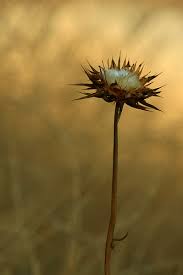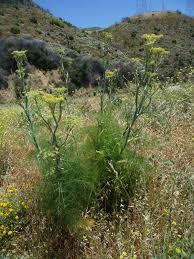https://www.usajobs.gov/GetJob/ViewDetails/339475500
https://www.usajobs.gov/GetJob/ViewDetails/336976400
https://www.usajobs.gov/GetJob/ViewDetails/336976400
https://www.usajobs.gov/GetJob/ViewDetails/336971700
https://www.usajobs.gov/GetJob/ViewDetails/336960600
http://www.co.cumberland.nc.us/human_resources/job_vacancies/default.aspx
http://web.eenorthcarolina.org/core/item/topic.aspx?tid=80300
Wednesday, March 27, 2013
Sunday, March 17, 2013
Friday, March 15, 2013
Natural Paper
A stainless steel cooking pot (not aluminum)
plant materiel (see below)
water
Washing Soda (commonly sold in the laundry section)
Heat source
Plant suggestions: Starchy plants like okra work well. Plants with longer fibers make stronger paper. these work well: gladiolus, cattails (seed head and leaf) corn, flax and iris. I've used "cotton" from cotton wood trees, silky seed fibers from thistles and dandelions, as well as a sprinkling of tall grasses, flowers and occasional leaf or bark chips to add interest. experiment and keep notes on what you've used and how they work.
Basic cooking Instructions: I keep things simple. simply put all your plant material in the pot and add water to cover it. if plants are to big cut them into pieces and then simmer like making soup. Add 1 to 2 tablespoons washing soda to the mix and swirl it around.(If you want to let this simmer all day longer and break down naturally , then you can leave the washing soda out of it) let this simmer for 3 to 4 hours. I've even cooked outside over an open fire letting it simmer all day. You could drain off excess moisture if yu want but by this time it's all broke down and pretty slimmy. I just ladle it up liquid and all and form the pages.
Now some folks have fancy paper forming trays and you can search on line on how to make them but I just use window screens. I set them up on cinder blocks and spread my mixture out to hand form the pages and let them dry there.

2
3
4
5
6
7
8
9
10
Read more: How to Make Vellum? | eHow.com http://www.ehow.com/how_4814566_make-vellum.html#ixzz2NfARyxfP








plant materiel (see below)
water
Washing Soda (commonly sold in the laundry section)
Heat source
Plant suggestions: Starchy plants like okra work well. Plants with longer fibers make stronger paper. these work well: gladiolus, cattails (seed head and leaf) corn, flax and iris. I've used "cotton" from cotton wood trees, silky seed fibers from thistles and dandelions, as well as a sprinkling of tall grasses, flowers and occasional leaf or bark chips to add interest. experiment and keep notes on what you've used and how they work.
Basic cooking Instructions: I keep things simple. simply put all your plant material in the pot and add water to cover it. if plants are to big cut them into pieces and then simmer like making soup. Add 1 to 2 tablespoons washing soda to the mix and swirl it around.(If you want to let this simmer all day longer and break down naturally , then you can leave the washing soda out of it) let this simmer for 3 to 4 hours. I've even cooked outside over an open fire letting it simmer all day. You could drain off excess moisture if yu want but by this time it's all broke down and pretty slimmy. I just ladle it up liquid and all and form the pages.
Now some folks have fancy paper forming trays and you can search on line on how to make them but I just use window screens. I set them up on cinder blocks and spread my mixture out to hand form the pages and let them dry there.
Vellum
Obtain your animal skins (try the local butcher) and either begin processing immediately or place in a small garbage bag and store in the freezer.
Obtain your animal skins (try the local butcher) and either begin processing immediately or place in a small garbage bag and store in the freezer.
To begin processing, place the skins in the garbage can and
fill with water. Soak for 48 hours, changing the water every 12 hours.
Remove skins from the water and wash carefully, removing any residual
flesh with a fleshing knife , being careful not to cut through the skin. Wash until the rinse water runs clear.
, being careful not to cut through the skin. Wash until the rinse water runs clear.
Clean the trash can and refill with cold water. Add one cup of hydrated lime for every gallon of water used. Stir well with wooden pole.
for every gallon of water used. Stir well with wooden pole.
Fold the skin in on the flesh sides and place into the
water/lime mixture. Stir three times a day with wooden pole or stick. Do
not use metal, as it will react with the lime. Leave the skins soaking
in lime for 1 to 2 weeks, depending on the weather. In summer, 8 days
will be sufficient, while in winter it will take the full 2 weeks.
Remove the skins from the lime bath and spray with a garden
hose. Put on your gloves and pull the hair out of the hide. When the
hair is removed, make a new lime bath for the skins and soak them again
for 8 days, stirring three times a day.
Remove skins and wash well. Rinse thoroughly to remove all
the lime. When you're sure all the lime has been removed, place the
skins in a tub of clear water and soak for 2 days.
Remove hide from the water and place it in the center of
the frame. Affix it to the frame by piercing the edge of the hide with a
knife. Thread sticks through the holes leaving one end visible through
the hide. Tie a rope to either end and attach to the frame with
tensioning pegs.
Scrape the surface of the hide with a sharp knife and leave
on the frame, in the sun, for two days. After two days, sprinkle the
hide with water. Then dust with pumice powder and wipe away debris.
Tighten up the cords stretching the hide.
Wait 2 days and sprinkle hide with water again. Dust with
talcum powder and wipe away excess. Tighten tension cords. Leave in the
sun until completely dry.
Remove vellum parchment from frame.
Read more: How to Make Vellum? | eHow.com http://www.ehow.com/how_4814566_make-vellum.html#ixzz2NfARyxfP
How weary, stale, flat, and unprofitable
Seem to me all the uses of this world!
Fie on ’t, ah fie! 'Tis an unweeded garden
That grows to seed. Things rank and gross in nature
Possess it merely.
Does Ophelia give the rosemary (for remembrance) to an invisible Hamlet,
praying he hasn't forgotten about her? Does she give the rue (another
word for regret) to Gertrude, who may be regretting her hasty marriage
to Claudius? Keep these questions in mind as you read Ophelia's lines.
"There's rosemary, that's for remembrance; pray, love, remember," she
says, "and there is pansies. That's for thoughts […]. There's fennel for
you, and columbines: there's rue for you; and here's some for me: we
may call it the herb-grace o' Sundays: O you must wear your rue with a
difference. There's a daisy: I would give you some violets, but they
withered all when my father died." Fennel symbolized strength and
praiseworthiness, columbine symbolized folly, daisies symbolized
innocence, and violets symbolized faithfulness and modesty. So which
flowers belong to which characters?
Rosemary
Columbine
Aquilegia vulgaris

Fennel
(Foeniculum vulgare)
Natural ink
Place 1/2 cup of berries into a strainer and place over a bowl. Use berries that are fresh or
have been thawed. You may use one type of berry or a mixture of berries
depending on the color ink you want. Cut large berries, like
strawberries, into smaller pieces.
into a strainer and place over a bowl. Use berries that are fresh or
have been thawed. You may use one type of berry or a mixture of berries
depending on the color ink you want. Cut large berries, like
strawberries, into smaller pieces.
Press the berries against the strainer with a plastic or wooden spoon so that the berries crush and release their juice. Move the berries
around in the strainer and continue to press to ensure that you remove
as much juice as possible. Press the fruit pulp against the sides of the strainer with a spoon. If
you use a wooden spoon, it may become stained permanently. Don't try to
drain the fruit of all its juice. Forcing the juice from the skins of
the fruits results in cloudiness, affecting the final product.
so that the berries crush and release their juice. Move the berries
around in the strainer and continue to press to ensure that you remove
as much juice as possible. Press the fruit pulp against the sides of the strainer with a spoon. If
you use a wooden spoon, it may become stained permanently. Don't try to
drain the fruit of all its juice. Forcing the juice from the skins of
the fruits results in cloudiness, affecting the final product.
Remove the strainer containing the berry pulp. The bowl below should contain only berry juice.
Add 1/2 tsp. of vinegar to the berry juice and mix with a spoon. The vinegar allows the ink to retain the color.
Mix 1/2 tsp. of salt into the berry mixture. Salt will preserve the berry juice so that it can be used as ink without molding.
Pour the berry ink into a clean, small jar and tightly place
the lid on the jar. Keep the lid on the jar when the ink is not in use
to preserve the ink.
Store natural ink the the refrigerator or freezer when you are not using it to preserve the ink for as long as possible.
Read more: How to Make Natural Ink | eHow.com http://www.ehow.com/how_6321987_make-natural-ink.html#ixzz2NelxR5aW
Flower Ink
Instruction: put flower petals into a glass and cover it with warm water. Leave for a few hours (I leaved mine for a night).
After this
time separate the liquid. (You can boil it for a while to get stronger
colour - optional.) Add strong alcohol in proportions 1 dose of alc:4
dozes of extract.
Ink is ready to use!
Subscribe to:
Posts (Atom)